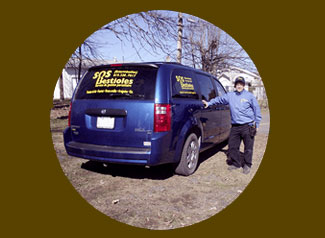
Wasps Control
Publication date: March 2nd, 2017Wasps are useful insects for our environment but their proximity becomes a risk for us. They sting when threatened to defend themselves and to protect the nest. Wasp nests that are hard to access to or far away may be left alone but it is not the case for nests too close to the habitation, the shed, play structures or the pool.
Wasp venom is a health risk to humans and pets. One can have an important allergic reaction even with only a few stings. A nest in jully month can contain more than 100 worker wasps. Statistics say that about 17% of individuals could have a symptomatic reaction after a wasps incident.. A wasp can sting more than once because its appendice is smooth. Venom volume could be to much to deal with. That is why, it is better to ask a professionnal pest control services to take care of wasp nests, native bees and baddly placed bumblebees hives.
It is much easier to eliminate wasp nests in the spring when they are small with only the queen inside. The nest grows and contains more wasps, through the spring and summer. Nests are the biggest in late summer or early fall. There are always ‘Body Guards’ wasps at the entry /exit holes to watch for any potential threat. The wasps nest is most active in June to July. The queen wasp lays more and more eggs. The easiest and safest solution is to call a pest control specialist. It is best not to try to do it yourself since you may not be successfull and wasps will become more suspicious and potentially more agressive.
The queen wasp produces fertile males and future young queens in October. These wasps are twice the size of a sterile worker wasps. When the cold weather comes, the old queen and all the worker wasps will die. Males and young queens will mate. Young fertilized queens will survive through winter and will come out in the spring, to establish new colonies like their queen mother did the year before. Males wasps die rapidly after mating. Nests last only the year (annual). Although nests are not re-used, favored spots for wasps may be used more than once.
Structural nests are the most challenging because they are hidden and difficult to find and to get to. One should never block the outside entry/exit of the wasps, to avoid them to end up in the house. With their mandibula, wasps can chew plaster (dry wall), styrofoam, carboard and mineral insulation.
SOS Bugs Pest Control can help you, we can safely get rid of a structural nests, suspended or underground wasp nests. We use several well proven methods : mechanical aspiration, insecticide fogging, dusting, telescopic tool, etc. SOS Bugs Pest Control uses thermal imaging technology (Infrared light) to help us localize many structural nests of bumblebees and yellowjackets. We wear protective clothing and proceed with calm and experience at the right time of the day for more efficiency. We remove all nest components after our intervention. Queen, eggs and larvae development have to be stopped. All our interventions are done by our biologist who has over 15 years of experience in houses, condos, appartments and commercial pest control. Our biologist works professionaly to safely eliminate all types of structural bumblebee hives, suspended ball shape nests, underground wasp nests when they represent a serious risk for your health.
SOS Bugs Pest Control provides:
- Safe, calm and professional approach
- Biodegradable products (pyrithrine based)
- Efficient nest removal
- Telescopic equipment
- Nests’ removal by aspiration
We offer our services: in Gatineau.
We are opened
Monday to Friday
8:00 a.m. to 8:00 p.m.
We pick up the phone on weekends
Call for emergencies
Recently posted
- Ultrasonic Rodent Repellent, Effective?March 18th, 2018
- Thousands of Ants!August 21st, 2017
- Why is it so hard to get rid of moles?March 6th, 2017
- Why do I have mice in my house ?March 5th, 2017
- Why is it so difficult to get rid of cockroaches?March 4th, 2017


